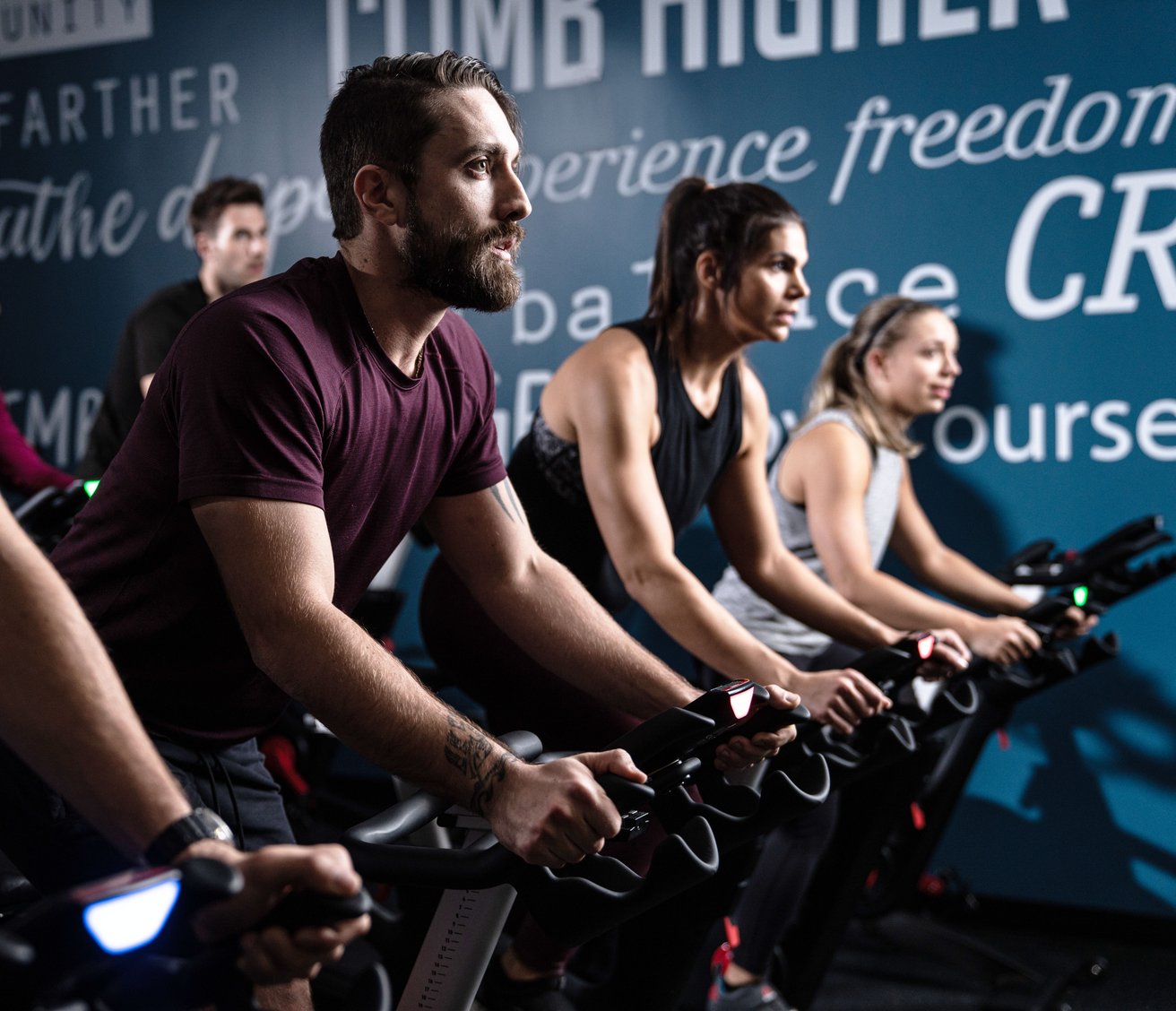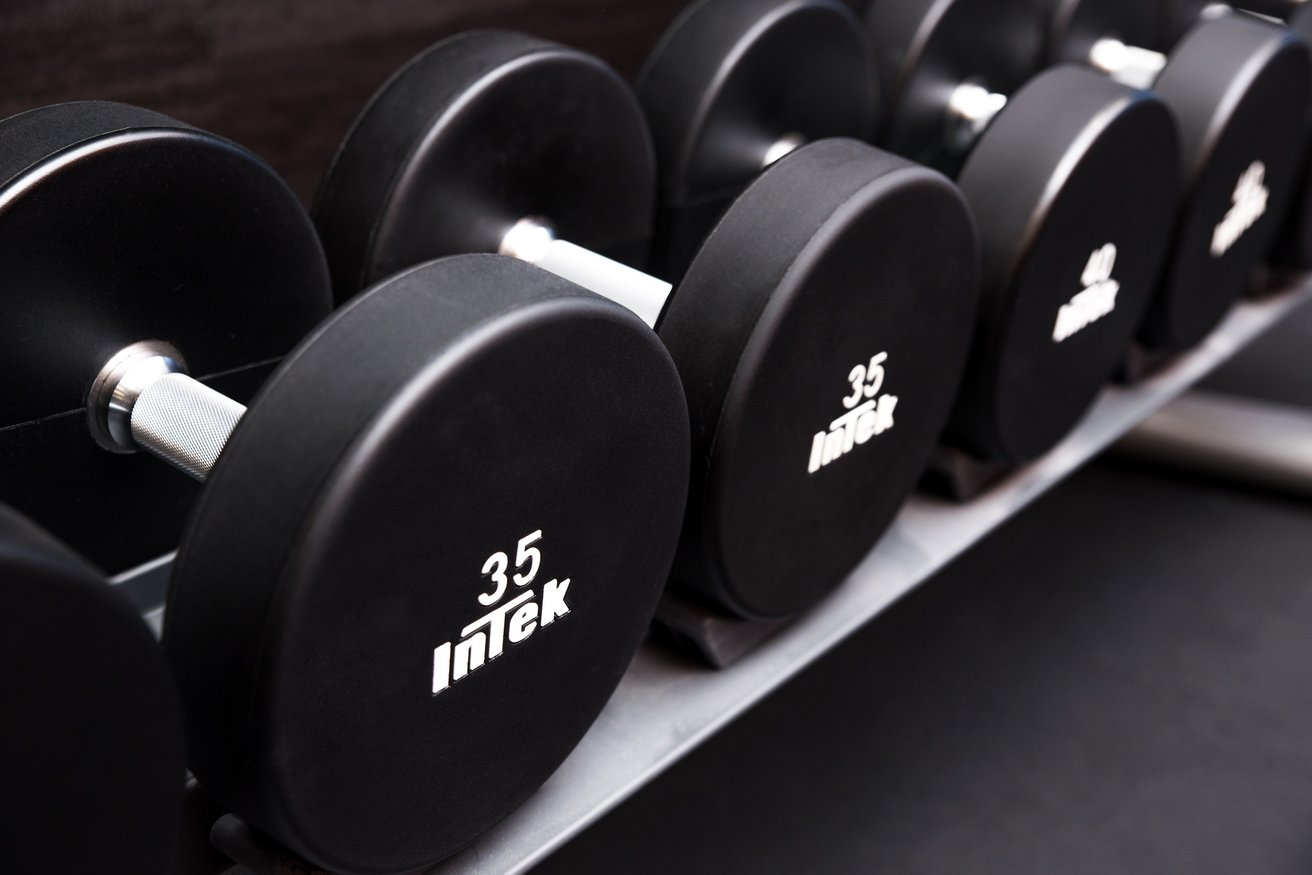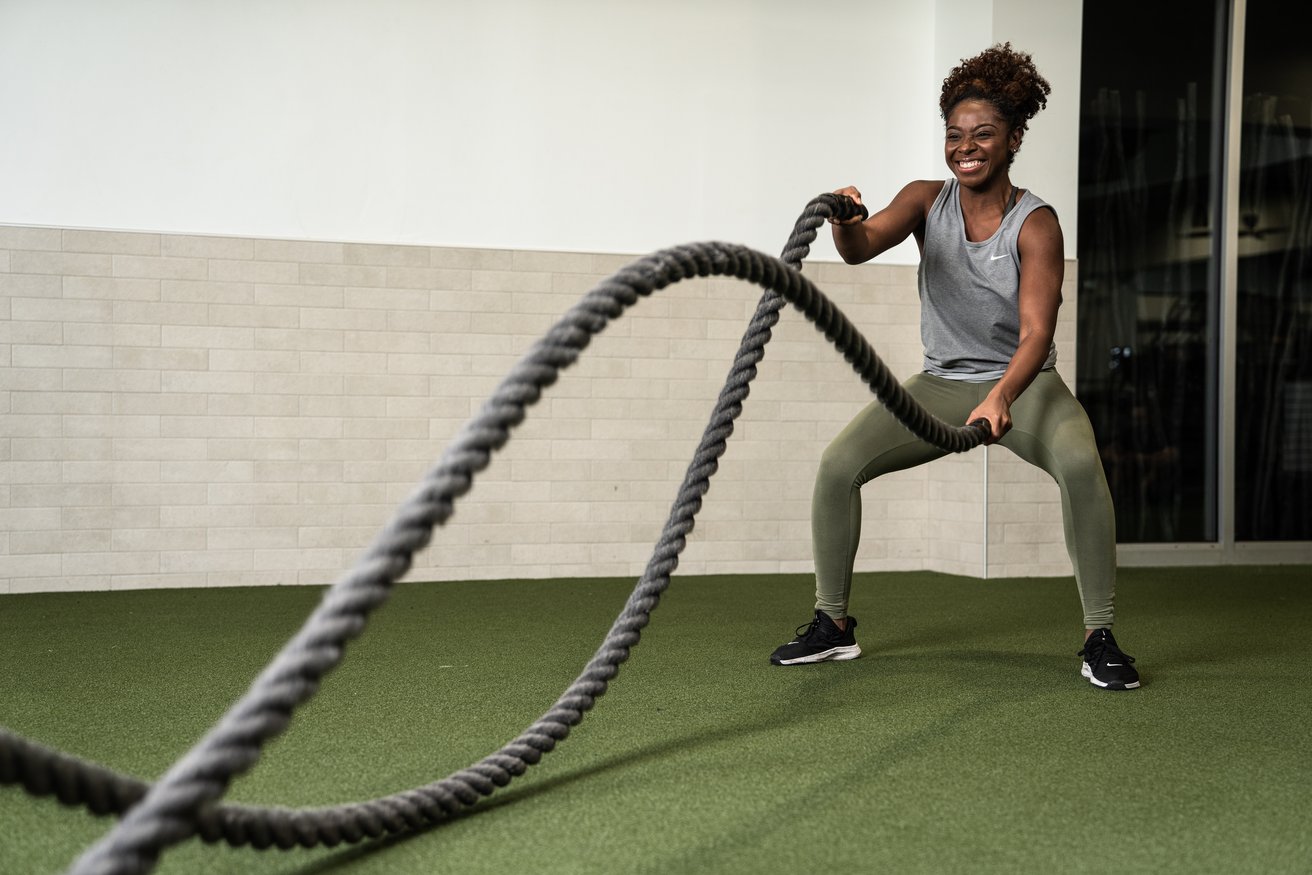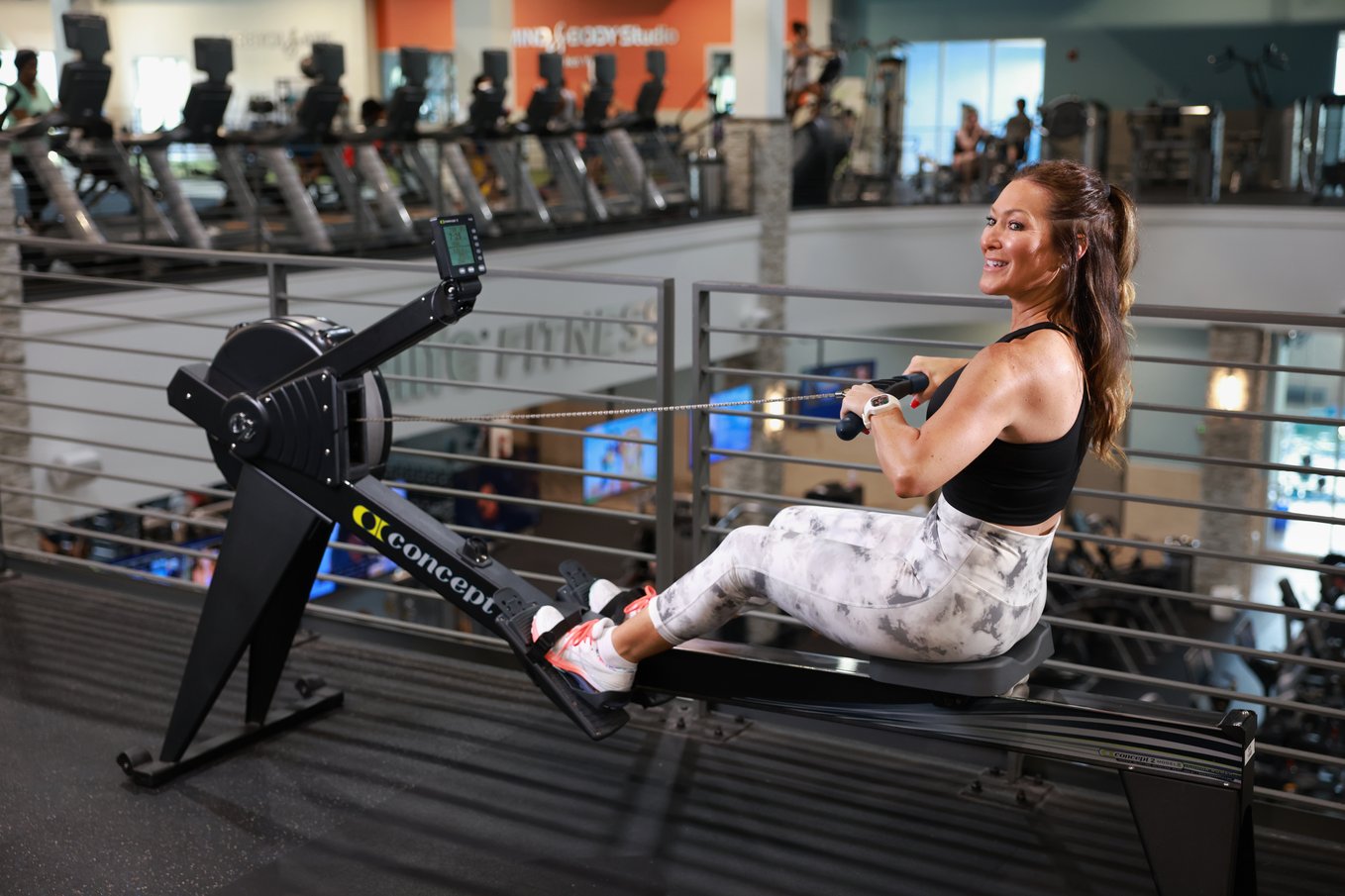Cardio before or after weights for Weight Loss: Which burns more fat?
Cardio before or after weights for Weight Loss: Which burns more fat?
Cardio before or after weights? That's a question many fitness enthusiasts grapple with.
The response is not clear-cut. It can be contingent on various elements, including your fitness ambitions and individual inclinations.
Some argue that cardio before weights helps warm the body and enhances fat burning. Others insist that performing cardio post-weight aids in better muscle recovery and calorie burn.
No matter which camp you're in, understanding how cardio before or after weights impacts your workout routine is crucial for achieving optimal results.
Benefits of Cardio Before Weights

The fitness world is rife with debates, one being whether to exercise cardiovascular exercise before or after weight training. However, choosing cardio first has its unique advantages.
Fat Burning Potential Amplified
Kicking off your workout routine with moderate-intensity cardio activity can amplify the fat-burning process. This approach depletes glycogen stores during the initial phase of your workout session, causing stored fat to be utilized as fuel when you transition into lifting weights.
Promotion of Cardiac Function Improvement
A key advantage of starting a gym session with a cardiovascular exercise is improved cardiac function. According to The American College of Sports Medicine, initiating workouts enhances heart rate output and blood flow and primes muscles for subsequent strength training exercises.
Muscle Growth Support Without Compromise
In contrast to popular belief, focusing on cardiovascular training activities at the start doesn't necessarily compromise muscle growth. Research published by Sports Medicine (source) reveals that pre-resistance endurance training does not significantly impede muscle hypertrophy (growth), provided the total volume isn't excessive and adequate recovery time is allowed.
Note:
This strategy could be more beneficial for those aiming to reduce whole-body adiposity while improving overall endurance rather than solely concentrating on building big muscle groups such as legs or major upper-body muscles.
Benefits of Cardio After Weights

The practice of doing cardio after weights can yield a multitude of benefits. Doing the proper form of cardio after weights can be a great way to support muscle growth and diminish the chances of losing muscle while attempting to slim down.
Fostering Muscle Growth
Performing strength training before cardiovascular exercise primes your body for optimal muscle hypertrophy. It effectively utilizes glycogen stores crucial for lifting heavy weights and working out large muscle groups such as legs, chest, and back.
Some studies suggest that engaging in moderate-intensity cardio activity following weight training could potentially increase lean mass more than if it were done before lifting weights. This is essential when structuring workouts for increased leg muscle mass or other fitness goals.
Aiding the Recovery Process
Beyond supporting muscular development, doing cardio after weight training also aids recovery. Lower-intensity activities like cycling or walking on a treadmill at a comfortable pace help eliminate lactic acid build-up from muscles worked during strength sessions that target major muscle groups.
This process accelerates recovery and reduces whole-body adiposity (Fat) while promoting energy expenditure without compromising gains made through resistance exercises. This approach is ideal for those seeking improved cardiac function and muscular development simultaneously.
Promoting Caloric Burn
An additional advantage is the potential for higher overall calorie burn due to what is known as Excess Post-exercise Oxygen Consumption (EPOC). This effect occurs when the body continues burning calories at an elevated rate even after physical activity. It is commonly experienced following high-intensity workouts, including weightlifting sessions.
The American Council on Exercise states that incorporating limited high-intensity training within one's routine will maximally increase heart function, thus helping achieve fitness goals efficiently.
Intensity Level for Maximum Fat Burn
-1.jpg?width=1312&height=875&name=191117_OL_SS_Fitness_Floor_0079%20(1)-1.jpg)
The intensity level of your workout is a key determinant of how much fat you burn. Finding the correct balance between effort and comfort is essential.
Moderate Intensity Cardio Activity: A Good Starting Point
Moderate-intensity cardio activities like brisk walking or light jogging are often recommended if you embark on your fitness journey. These exercises can increase leg muscle mass while promoting energy expenditure without putting undue strain on the body.
CDC physical activity guidelines suggest adults should aim for at least 150 minutes of such aerobic activity every week to increase heart function and reduce whole-body adiposity effectively maximally.
Limited High-Intensity Training (HIIT): For Advanced Fitness Goals
Limited high-intensity training could benefit those with more advanced fitness goals. HIIT workouts involve short bursts of intense exercise followed by recovery periods which significantly improve cardiac function and support muscle growth targeting both big muscle groups as well as small ones.
In sports medicine, it's important to note that despite yielding quick results, these workouts shouldn't be done daily due to risk factors, including injury or overtraining. Instead, incorporating one or two weekly sessions alongside regular strength training and cardio routines would suffice.
Finding Your Comfortable Pace: The Key To Consistency
Your comfortable pace when performing aerobic exercise largely depends on current fitness levels and individual health considerations. If you're new to a regular exercise regime or have medical conditions affecting cardiovascular tolerance levels, starting slow before gradually building up cardiovascular endurance over time would serve you best.
Mayo Clinic suggests using perceived exertion tests like the Talk Test as reliable measures when finding the appropriate workout intensity level. This allows you to not compromise on muscle hypertrophy while contributing to effective weight loss targets.
Remember, consistency remains pivotal in achieving long-term results. Hence, prioritizing maintaining a steady routine rather than pushing excessively hard during isolated workout sessions and limiting overall progress becomes imperative.
Time Constraints for Maximum Fat Burn

The clock is always ticking, and every second counts regarding your workouts at Onelife Fitness. How can you maximize your time while achieving a comprehensive workout combining cardio and weight training?
Navigating Through Time Restrictions Efficiently
To navigate these restrictions efficiently, alternating days between moderate-intensity cardio activity and weight lifting might be an effective solution, per physical activity guidelines from the American College of Sports Medicine.
- Focus on compound movements such as squats or deadlifts during weight sessions, which target major muscle groups simultaneously.
- Incorporate high-intensity interval training (HIIT) into your routine for improved cardiac function, plus the added benefit of promoting energy expenditure and reducing whole-body adiposity within a shorter timeframe than comfortable pace exercises.
- Avoid overdoing HIIT since its catabolic nature may limit muscle growth by breaking down big muscles instead of building them up like resistance exercises do.
Leveraging Limited High-Intensity Training
Considering leveraging limited high-intensity training if the above method doesn't fit well into your schedule due to tighter constraints. Studies have shown that similar benefits can be achieved via intense short bouts versus longer duration ones performed leisurely, increasing lean mass more effectively than traditional methods alone without compromising any potential gains towards improving overall fitness goals.
Unleashing the Power of Cardio and Weight Training

Pursuing optimal fitness often leads us to a common question: Should we prioritize cardio workouts or weight training? At Onelife Fitness, we believe in harnessing all the energy power of both cardio and strength training.
Navigating Between Cardiovascular Exercise and Strength Training
Finding an equilibrium between these two forms of physical activity can be challenging yet rewarding. It's not about favoring one over the other but integrating them effectively into your routine.
- Moderate-intensity cardio activity on recovery days from weightlifting sessions supports muscle growth by promoting energy expenditure without compromising muscle hypertrophy.
- A well-designed program that combines both forms maximally increases heart function and lean mass - vital for improved cardiac function and reducing whole-body adiposity as part of any successful weight loss journey.
Sculpt Your Workout Plan For Maximum Impact
Your specific plan will depend largely on personal preferences, time constraints, and current fitness level, among other factors. According to the American College Of Sports Medicine resource library, a balanced approach could involve 30 minutes of steady-state cardio and 30 minutes of strength exercises targeting different major muscle groups daily.
To limit compromise in muscle growth during combined sessions, it's crucial not to push too hard. Limited high-intensity training should be performed separately to avoid conflicting goals - cardiovascular health or increased leg muscle mass. Remember to consult professionals before starting a new regimen at our luxurious gyms at Onelife Fitness across the United States East Coast.
We offer all modern amenities, including:
- Swimming pool
- Basketball court
- Racquet sports facilities
- Performance training tailored to individual needs by a personal trainer.
We are committed to helping you achieve a comfortably paced lifestyle yet challenging enough to promote continuous progress.
Sample Workouts for Maximum Fat Burn
You can take the first steps toward your fitness goals and lose weight by combining cardio and weight training.
Here are a few workout suggestions that maximize fat-burning potential while adhering to physical activity guidelines:
Workout 1: Cardio-Weights Blend
This routine begins with lower-intensity cardio activity such as jogging or cycling for approximately 20 minutes for fat loss and to build endurance. The aim here is not as much energy merely warming up; it's about initiating the process of fat burning too.
You then transition into strength training, focusing on major muscle groups like legs, chest, and back. Incorporate exercises like squats, which increase leg muscle mass, bench presses targeting upper body muscles, and deadlifts engaging big muscle groups at the same workout session, once in line with sports medicine advice.
With this primary goal of muscle building, you combine cardio and also focus on building strength an increasing muscle size at the same time.
Workout 2: Weights-Cardio Fusion
In this regimen, kick-off strength workouts by concentrating on weight lifting first, which supports muscle growth without limiting it due to preceding cardiovascular exercise.
The first resistance training segment should engage large and small muscle groups through compound movements (like lunges) and isolation drills (like bicep curls). After an exhaustive weights session, proceed onto limited high-intensity interval training (HIIT) cardio sessions lasting around 15 minutes each.
Remember, increasing lean mass aids in reducing whole-body adipose tissue, thus promoting energy expenditure, leading ultimately towards desired weight loss.
These routines strive to balance cardiovascular exercise and resistance workouts effectively, even with time constraints.
Keep alternating these two regimens every other day throughout the week while taking rest days when needed.
FAQs- Cardio: Before or After Weights?
Does cardio before weights affect muscle mass growth?
Cardio prior to weights can potentially diminish strength and power output during subsequent weight training, slightly impacting muscle growth.
Should I do a cardio workout or weights first?
Research suggests that the order depends on your goals. For endurance, do cardio first; lift weights to gain strength build muscle, and lose body fat.
Is it better to run before or after lifting weights?
If you're aiming for maximum muscular strength and size, it's generally recommended to run after lifting rather than beforehand losing weight first.
A study by The National Institute of Health found that "Aerobic training alone is the optimal mode of exercise for reducing fat and total body mass."
In the end, what truly counts is consistency in whatever approach you choose.
Maintain that momentum at Onelife Fitness!
Contact Onelife Fitness for all your fitness questions and gym classes across GA, MD, VA, DC & WV. We look forward to helping you on your health and fitness journey!